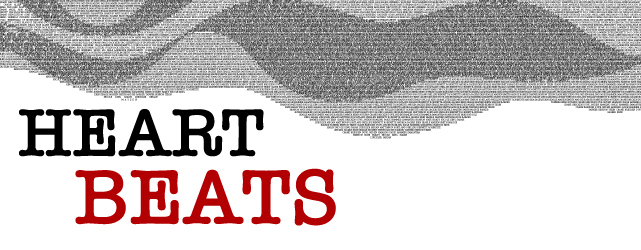
ENGL 4310 – Heart Beats Exhibit

Description
Born in 1922 in Lowell, Massachusetts, Kerouac was always interested in literature as both a consumer and a creator. He moved to New York at seventeen where he met Allen Ginsberg and William S. Burroughs. It was there that the Beat movement was first conceived.
Kerouac’s autobiographical novel On the Road (1957) is considered a foundational Beat work. It was written in spontaneous prose, a technique developed by Kerouac which aimed at capturing the truth of the moment through an undisturbed flow of ideas. The result was a distinct rhythm similar to that of a jazz soloist. For Kerouac, jazz was at the center of the Beat movement.
Another distinct trait in Kerouac’s writing is his complex spirituality—sacrilegious, yet pious blends of Zen Buddhist theology and Christian imagery. He toed the line between both worlds but always returned to his Catholic roots.
Spirituality wasn’t always enough to cope with what Kerouac saw as an oppressive society; he also sought respite in alcohol. Seldom without a drink nearby, Kerouac struggled to find peace in sobriety. He died in 1969 at forty-seven from cirrhosis due to his long-term alcohol abuse.
Art Didactic:
George Herms’ Pure XX poignantly reflects Kerouac’s sensibilities. Utilizing the shape of the cross in combination with an image of the Buddha, it incorporates the mixture of Eastern and Western spirituality indicative of the original Beat. The piece also contains an Austin A40 steering wheel cap, which brings in themes of automobile travel so central to On the Road. Perhaps the most obvious aspect of the piece is the prominent placement of mutilated bottles of Purex bleach that match up well with Kerouac’s focus on simple everyday objects while magnifying the paradox of a dirty cleaning agent. Similarly, Kerouac believed in being holy while not necessarily following the codes of “purity” associated with more traditional spiritual paths.
Object Didactics:
Jug of wine:
At the iconic Six Gallery reading, in 1955, Kerouac opted not to read any of his work, but rallied the audience by collecting donations from them and purchasing jugs of red wine to pass around.
Poem & Cigarettes:
The above poem is an excerpt from the 1954 book of the same name. Highlighting Kerouac’s depressive tendencies, it is also a demonstration of his perpetual restlessness.
Kerouac was an avid smoker, often carrying a pack of Lucky Strikes in his shirt pocket.
239th Chorus:
Kerouac idolized the Jazz musicians of his day, a fact reflected by his writing style. His favorite artist was Charlie “The Bird” Parker, and he expressed his reverence for him with this poem from Mexico City Blues (1959).
Photo:
Taken in 1953 by Elliott Erwitt, this photograph shows Kerouac slightly smirking—a playful, self-aware goof who never took himself too seriously.
239th Chorus
Charley Parker Looked like Buddha
Charley Parker, who recently died
Laughing at a juggler on the TV
after weeks of strain and sickness,
was called the Perfect Musician.
And his expression on his face
Was as calm, beautiful, and profound
As the image of the Buddha
Represented in the East, the lidded eyes,
The expression that says “All is Well”
—This was what Charley Parker
Said when he played, All is Well.
You had the feeling of early-in-the-morning
Like a hermit’s joy, or like
the perfect cry
Of some wild gang at a jam session
“Wail, Wop”—Charley burst
His lungs to reach the speed
Of what the speedsters wanted
Was his Eternal Slowdown.
A great musician and a great
creator of forms
That ultimately find expression
In mores and what have you.
Publication Date
11-21-2019
Keywords
Kerouac, poetry, exhibit
Disciplines
Arts and Humanities
Recommended Citation
Hammer, Paige and Benson, Tanner, "Kerouac" (2019). ENGL 4310 – Heart Beats Exhibit. 1.
https://digitalcommons.usu.edu/english_4310/1


